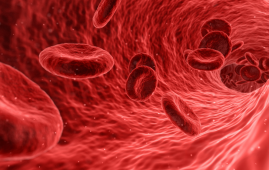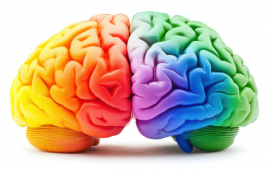

A mechanism by which insulin-like growth factors promote brain plasticity has been found by research at the Max Planck Florida Institute for Neuroscience.
The insulin superfamily of hormones, which includes insulin, insulin-like growth factor 1 (IGF1), and insulin-like growth factor 2 (IGF2), are essential for healthy brain development and function, including learning and memory, in addition to regulating blood sugar, metabolism, and growth.
These hormones can either be produced directly in neurons and glial cells in the brain or can reach the bloodstream from the liver. The IGF1 receptor is one of the receptors they bind to, activating signals that control the development and activity of neurons. This signaling pathway’s disruption contributes to disorders including Alzheimer’s and cognitive decline.
Scientists studied the activation of this signaling pathway in the hippocampus, a part of the brain important for learning and memory, to comprehend how IGF1 and IGF2 enhance brain health. They were particularly interested in determining whether IGF signaling was active during synaptic plasticity, the biological mechanism that fortifies neural connections during memory creation and guards against cognitive loss. Science Advances is the journal where the study is published.
Scientists at Max Planck were able to see the activity of the signaling pathway involved in plasticity as a result of the development of a biosensor that could recognize whether the IGF1-Receptor was activated. The investigators noticed that the IGF1-Receptor was strongly active in the strengthening synapse and neighboring synapses while a synapse was going through plasticity. During synaptic plasticity, this receptor activation was essential for synapse strengthening and development. However, it was unclear from where the IGF that triggers the receptor was originating.
Lead researcher and first author of the scientific publication, Dr. Xun Tu, however, described how being able to visualize the receptor activation during plasticity gave them a clue. “The fact that the activation of the IGF-receptor was localized near the synapse undergoing plasticity suggested that IGF1 or IGF2 might be produced in hippocampal neurons and locally released during plasticity,” she explained.
The researchers investigated this theory by determining if hippocampus neurons could create and release IGF1 and IGF2.
It’s interesting that they discovered a differential in IGF1 and IGF2 synthesis specific to certain regions. IGF1 was produced by the CA1 neurons in the hippocampus, while IGF2 was produced by the CA3 neurons. IGF was released when either CA1 or CA3 neurons were stimulated in a manner that mirrored synaptic plasticity. Importantly, the activation of the IGF1-Receptor during plasticity and synaptic development and strengthening was prevented when the scientists interfered with the neurons’ ability to generate IGF.
Senior author on the publication and Max Planck Scientific Director, Dr. Ryohei Yasuda, summarized the findings. “This work reveals a local, autocrine mechanism in neurons that is critical for brain plasticity. When a synapse undergoes plasticity, IGF is released locally to activate the IGF1-Receptor on the same neuron. Disrupting this mechanism impairs the plasticity, highlighting its critical role in maintaining cognitive health.”
This new mechanism’s discovery clarifies how memories are stored in the brain and emphasizes the value of further research on the insulin superfamily of brain hormones. The researchers are hoping that by figuring out the method through which IGF hormones promote brain plasticity, they will be able to investigate whether blocking this signaling pathway could delay cognitive aging and treat conditions like Alzheimer’s.
more recommended stories
 Fat-Regulating Enzyme Offers New Target for Obesity
Fat-Regulating Enzyme Offers New Target for ObesityKey Highlights (Quick Summary) Researchers identified.
 Spatial Computing Explains How Brain Organizes Cognition
Spatial Computing Explains How Brain Organizes CognitionKey Takeaways (Quick Summary) MIT researchers.
 Gestational Diabetes Risk Identified by Blood Metabolites
Gestational Diabetes Risk Identified by Blood MetabolitesKey Takeaways (Quick Summary for Clinicians).
 Phage Therapy Study Reveals RNA-Based Infection Control
Phage Therapy Study Reveals RNA-Based Infection ControlKey Takeaways (Quick Summary) Researchers uncovered.
 Pelvic Floor Disorders: Treatable Yet Often Ignored
Pelvic Floor Disorders: Treatable Yet Often IgnoredKey Takeaways (Quick Summary) Pelvic floor.
 Urine-Based microRNA Aging Clock Predicts Biological Age
Urine-Based microRNA Aging Clock Predicts Biological AgeKey Takeaways (Quick Summary) Researchers developed.
 Circadian Control of Neutrophils in Myocardial Infarction
Circadian Control of Neutrophils in Myocardial InfarctionKey Takeaways for HCPs Neutrophil activity.
 E-Cigarette Use and Heart Attack Risk in Former Smokers
E-Cigarette Use and Heart Attack Risk in Former SmokersKey Takeaways for Clinicians and Nurses.
 Ultramarathon Physiology: What HCPs Should Know?
Ultramarathon Physiology: What HCPs Should Know?Ultramarathon Metabolism: What Happens to the.
 High-Intensity Training and Oxidative Stress Insights
High-Intensity Training and Oxidative Stress InsightsNew Evidence Linking High-Intensity Training and.

Leave a Comment